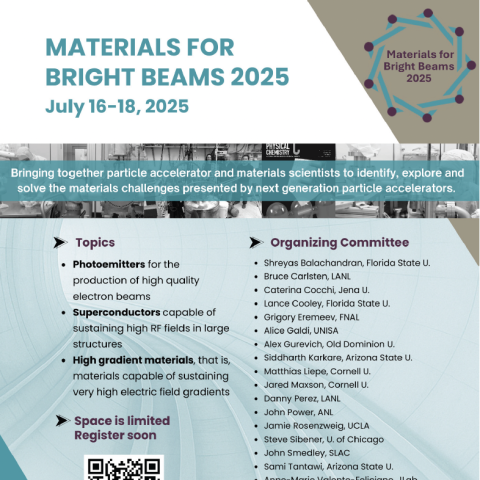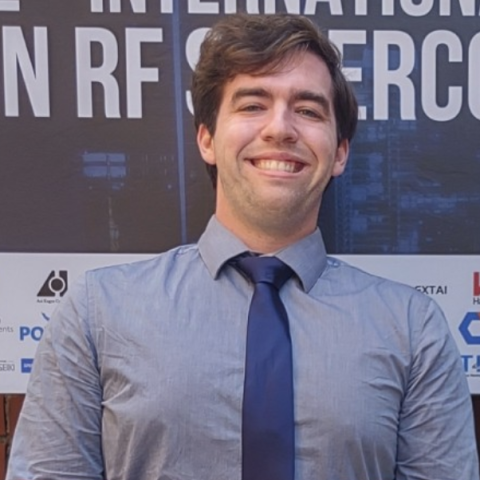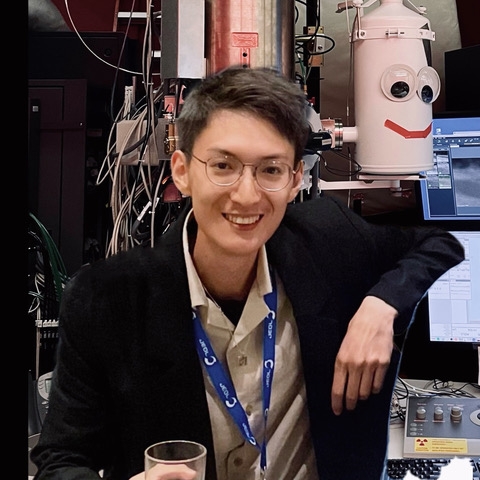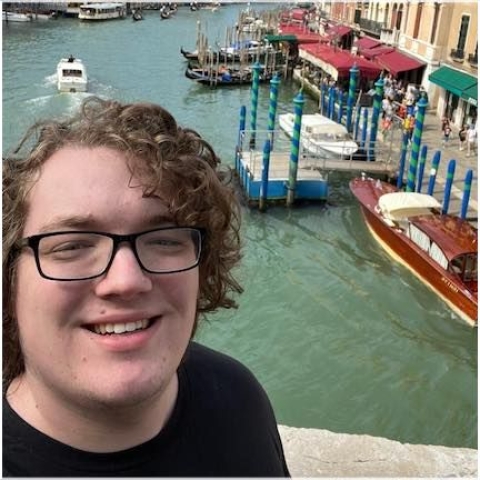Spotlights
Full listing
Over the past decade, the Center for Bright Beams has been a leader in designing new materials to improve the performance of particle accelerators. CBB scientists apply advanced materials science to the devices that produce and accelerate beams, which operate in extreme conditions and must deliver performance at the edge of materials feasibility. The inaugural Materials for Bright Beams Workshop, held at Cornell University, marked a major milestone—bringing together researchers from across disciplines to dive into the science and chart the future of materials for accelerators.
Jake Parsons received 2nd Prize in the Early Career Researcher Presentation category at the SRF2025 conference held in Tokyo, Japan for his presentation, “Performance of the Cornell Conduction-Cooled Nb₃Sn Cavity Cryomodule."
whose thesis is “Decoding Aberrations and Information in Phase Space for Electron Microscopy”
CBB is pleased to announce the graduation of PhD Aiden Harbick,whose thesis is: “Computational Modeling of Magnetic Field Interaction with Superconductors Under High-Field and High-Dissipation Conditions: A TDGL Approach Applied to Nb and Nb3Sn”
Congratulations to Weijian (Lucy) Lin for her outstanding thesis work!
New Patent Designed to Enhance Electron Microscopy - This patent involves the use of two radiofrequency cavities to correct particle-beam energy spread in both space and time. 🚀Researchers from the Center for Bright Beams were granted U.S. Patent No. US 12,283,455 B2, titled "Monochromator Device and Methods of Use."This groundbreaking technology relates to an innovative monochromator device designed to enhance electron microscopy.
The featured article, "Efficient six-dimensional phase space reconstructions from experimental measurements using generative machine learning", explores groundbreaking advancements in reconstructing phase space at the Continuous Electron Beam Accelerator Facility at 12 GeV.
Professor Kim will guide Fermilab through this transitional period as it continues to tackle fundamental questions in science and drive innovation in particle physics, quantum science, and accelerator research.
See CBB in the press, featured articles, research highlights, and more.
Advancing Particle Accelerator Performance: Unveiling the Impact of Surface Defects in Nb₃Sn-Coated SRF Cavities"Coating the interior of superconducting radiofrequency (SRF) cavities with a Nb3Sn film can drastically enhance the efficiency and performance of particle accelerator infrastructure.










